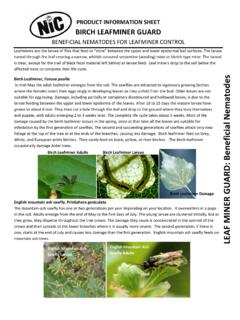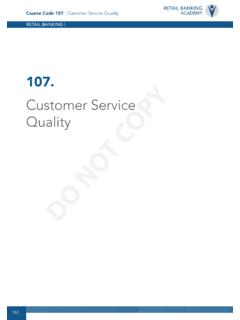Transcription of American Borate Company
1 1 American Borate Company Safety Data Sheet Borax Decahydrate Product identifier Borax Decahydrate Index No 005-011-01-1 CAS 1303-96-4 ECN 215-540-4 REACH Registration number: 01-2119490790-32-0002 Trade names: Borax Decahydrate Chemical name/synonyms: Sodium tetraborate decahydrate, disodium tetraborate, borax Details of the supplier of the safety data sheet Supplier name: American Borate Company Address: 5701 Cleveland Street, Suite 350, Virginia Beach, VA 23462 Phone No: (757) 490-2242 or (800)-486-1072 Emergency Phone Numbers: Monday through Friday 8am 5pm EST: (757) 490-2242 or (800) 486-1072 After 5pm and weekends: CHEMTREC 1-800-424-9300 Relevant identified uses of the substance and uses advised against The product is used in industrial manufacturing, in particular in: Ceramics Detergent Borosilicate glass Insulation fiberglass Classification of the substance GHS Classification in accordance with 29 CFR 1910 (OSHA HCS) Reproductive toxicity (Category 2) H361 Suspected of damaging fertility or the unborn child Eye irritant (Category 2) H319 Causes serious eye irritation.
2 Acute Oral (Category 5) H303 May be harmful if swallowed. GHS Label elements, including precautionary statements Pictogram Signal word Warning SECTION 2. Hazard Identification SECTION 1. Identification 2 Hazard statements H361 Suspected of damaging fertility or the unborn child H319 Causes serious eye irritation. H303 May be harmful if swallowed. Precautionary statements P201 Obtain special instructions before use. P202 Do not handle until all safety precautions have been read and understood. P264 Wash thoroughly after handling P280 Wear protective gloves/protective clothing/eye protection/face protection P281 Use personal protective equipment as required. P305+P351+P338 If in eyes: Rinse cautiously with water for several minutes. Remove contact lenses, if present and easy to do. Continue rinsing P308 + P313 If exposed or concerned: Get medical advice/ attention.
3 P405 Store locked up. P501 Dispose of contents/ container to an approved waste disposal plant. Additional information For Full text of R-S phrases as well as Hazard Class/Statements and Precautionary Statements see section 16. Other hazards Emergency overview Borax decahydrate is a white odorless, powdered substance that is not flammable, combustible, or explosive, and has low acute oral and dermal toxicity. Potential health effects Inhalation is the most significant route of exposure in occupational and other settings. Dermal exposure is not usually a concern because borax decahydrate is poorly absorbed through intact skin. Inhalation Occasional mild irritation effects to nose and throat may occur from inhalation of borax decahydrate dusts at levels higher than 10 mg/m3. Eye contact Borax decahydrate is a serious eye irritant. Skin contact Borax decahydrate does not cause irritation to intact skin. Ingestion Products containing borax decahydrate are not intended for ingestion.
4 Borax decahydrate has low acute toxicity. Small amounts ( a teaspoonful) swallowed accidentally are not likely to cause effects; swallowing amounts larger than that may cause gastrointestinal symptoms. Reproductive/Developmental Animal ingestion studies in several species, at high doses, indicate that borates cause reproductive and developmental effects. A human study of occupational exposure to Borate dust showed no adverse effect on reproduction.. A recent epidemiological study and a peer reviewing report of the past epidemiological studies conducted in China didn t show any negative effect of boron on human fertility (10, 11). Potential ecological effects Large amounts of borax decahydrate can be harmful to plants and other species. Therefore releases to the environment should be minimized. Signs and symptoms of exposure Symptoms of accidental over-exposure to borax decahydrate have been associated with ingestion or absorption through large areas of damaged skin.
5 These may include nausea, vomiting, and diarrhea, with delayed effects of skin redness and peeling (see section 11). 3 Substances: The product contains greater than percent (%) borax decahydrate Na2B4O7. 10H20 Chemical Name Purity CAS ECN REACH Registration No. Hazard Statements Borax decahydrate 1303-96-4 215-540-4 01-2119490790-32-0002 H361 / H319 / H303 For other Chemical inventory listings, please refer to section 15. Description of first aid measures General advice Move out of dangerous area. Seek medical attention. Show this safety data sheet to the doctor in attendance. Skin contact Wash with soap and water. Seek medical attention. Eye contact As with any chemical exposure to the eye, flush eyes with water for at least 20-minutes. Seek medical attention. Inhalation If symptoms such as nose or throat irritation are observed, remove person to fresh air. If not breathing, give artificial respiration.
6 Seek medical attention. Ingestion If large amounts are swallowed ( more than one teaspoon), give two glasses of water or milk to drink and seek medical attention. Never give anything by mouth to an unconscious person. Note to physicians Observation only is required for adult ingestion of less than 7 grams of borax decahydrate. For ingestion in excess of 7 grams, maintain adequate kidney function and force fluids. Gastric lavage is recommended for symptomatic patients only. Hemodialysis should be reserved for massive acute ingestion or patients with renal failure. Boron analyses of urine or blood are only useful for documenting exposure and should not be used to evaluate severity of poisoning or to guide treatment [1] (see section 11). Most important symptoms and effects, both acute and delayed Described in labelling. Indication of any immediate medical attention and special treatment needed No data available.
7 Suitable extinguishing media Use fire extinguishing media suitable for surrounding fires. Specific hazards arising from the chemical None Borax is non-flammable, combustible or explosive. The product is itself a flame retardant. SECTION 5. Fire-fighting Measures Identification SECTION 4. First-aid Measures SECTION 3. Composition/ Information on Ingredients 4 Special protective actions for fire-fighters Firefighters should wear pressure demand, self-contained breathing apparatus and full turn-out gear. Personal precautions, protective equipment and emergency procedures Avoid dust formation. In case of exposure to prolonged or high level of airborne dust, wear a personal respirator in compliance with national legislation. Environmental precautions Borax decahydrate is a water-soluble white powder that may, at high concentrations cause damage to trees or vegetation by root absorption (see section 12). Methods and materials for containment and cleaning up Land spill Vacuum, shovel or sweep up borax and place in containers for disposal in accordance with applicable local regulations.
8 Avoid contamination of water bodies during clean up and disposal. No personal protective equipment is needed to clean up land spills. Spillage into water Where possible, remove any intact containers from the water. Advise local water authority that none of the affected water should be used for irrigation or for the abstraction of potable water until natural dilution returns the boron value to its normal environmental background level (see sections 12, 13 and 15). Reference to other sections See sections 8 and 13 for further information. Precautions for safe handling To maintain package integrity and to minimize caking of the product, bags should be handled on a first-in first out basis. Good housekeeping and dust prevention procedures should be followed to minimize dust generation and accumulation. Your supplier can advise you on safe handling, please contact the supplier. The product should be kept away from strong reducing agents.
9 Apply above handling advice when mixing with other substances. Conditions for safe storage Keep containers closed and store indoors in a dry well ventilated location. Provide appropriate ventilation and store bags such as to prevent any accidental damage. Control parameters Occupational exposure limits for dust (total and resizable) are treated by OSHA, Cal OSHA and ACGIH as Particulate Not Otherwise Classified or Nuisance Dust Respect regulatory provisions for dust (total and respirable). ACGIH/TLV 10 mg/m3 Cal OSHA/PEL 10 mg/m3 OSHA/PEL (total dust) 15 mg/m3 OSHA/PEL (respirable dust) 5 mg/m3 SECTION 8. Exposure Controls/Personal Protection SECTION 7. Handling and Storage SECTION 6. Accidental Release Measures 5 DNEL values Exposure pattern Type/site of effect Exposure route DNEL value DNELs for workers Acute Local Inhalation mg/m3 Long-term Systemic Inhalation mg/m3 Long-term Systemic Dermal 42478 mg/day DNELs for the general public Acute Systemic Oral mg/kg bw/day Acute Local Inhalation mg/m3 Long-term Systemic Dermal (external) mg/kg bw/day Long-term Systemic Dermal (systemic)
10 Mg/kg bw/day Long-term Systemic Inhalation mg/m3 Long-term Systemic Oral mg/kg bw/day Long-term Local Inhalation mg/m3 Source: Chemical Safety Report of disodium tetraborate PNEC values PNEC add, freshwater, marine water = mg B/L PNEC add aqua intermittent = mg B/L PNEC add freshwater sediment, marine water sediment = mg B/kg sediment dry weight PNEC soil = mg B/kg soil dry weight PNEC add, STP = mg B/L Source: Chemical Safety Report of Boric Acid Exposure controls Appropriate engineering controls Maintain air concentrations below occupational exposure standards. Use local exhaust ventilation to keep airborne concentrations of borax decahydrate dust below permissible exposure levels. Wash hands before breaks and at the end of the workday.





